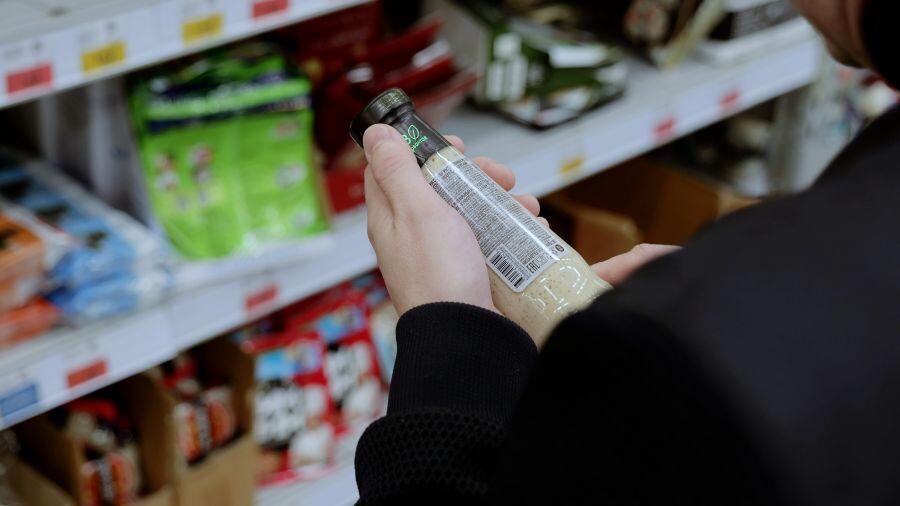The Future of Sweets and Guilt-Free Indulgence in the Snack Market
Change is happening in the snacks market, specifically the sweet snacks market.
There’s a shift toward balancing indulgence and health in the sweet snacks market. This has led to a growing demand for snacks with added benefits like protein and prebiotics. At the same time, new legislative actions and bans on toxic additives are influencing manufacturers to adjust ingredients and production methods.
These market factors are playing out across the food manufacturing industry and with consumers. Here’s how.
Chocolate Is Still the King of Candy
Chocolate remains the king of candy. The National Confectioners Association reports that chocolate is the largest segment of the confectionery market, hitting a new high of US$21.4 billion in sales in the past year. Despite a higher cost of living, 65% of consumers still see chocolate as an affordable treat, while 21% have increased their yearly chocolate consumption.
So, what's next for this dominant treat? Chocolate trends that will define 2025 are a rising demand for exclusive, limited-edition chocolates and multi-flavored offerings, as consumers seek more diverse taste experiences.
Every year, Valentine's Day is a key occasion for gifting chocolate. This means significant industry launches. This year, Mars has launched a new Valentine's Day product, Strawberries and Crème M&Ms, for those craving an exquisite flavor.
Health Trends — Yes, Even for Sweet Treats
The sweet snacks market is not limited to guilty pleasures alone. On the contrary, the overall consumer shift toward healthy snacking has included healthier sweet treats. This is driving innovation in the development of functional and nutritious snack options.
According to Kerry Group's 2025 Taste Charts, consumers desire products that balance adventurous taste profiles with wellness-driven goals, refusing to compromise on either flavor or health benefits. This trend is further underscored by the growing demand for healthy snacks, with the global market projected to reach $143.14 billion by 2030, up from $89.12 billion in 2022.
As consumers become more proactive about their health, snack food companies are responding with wholesome munchies catering to these evolving preferences. Kroger's Simple Truth brand is supporting consumers' New Year's resolutions with product bundles designed to help maintain healthy eating habits beyond Quitter's Day. The brand’s Sweet Treat Bundle includes Cinnamon Sugar Apple Straws, Dried Mangos, Raspberry & Blueberry Fruit & Veggie Blend Strips, Sea Salt Dark Chocolate Bar, and Duplex Sandwich Cookies.
Meanwhile, Hain Celestial is promoting a range of better-for-you products, including Earth's Best Toddler Snacks, Hartley’s 10-Cal Jelly and organic snacks through its Ella's Kitchen brand. Additionally, botanical sweeteners developed by BioHarvest Sciences and Tate & Lyle aim to provide natural sugar alternatives without aftertaste.
The Rise of Functional Confectionery and Protein-Packed Sweets
Functional confectionery is an emerging concept in chocolate-making. For instance, synbiotics from flax seeds and prebiotics from pumpkin seeds are paving the way for healthier chocolates without compromising the candies’ taste appeal.
Healthy snack design has transformed sweets into good sources of protein. Hershey's FULFIL Nutrition has introduced innovative protein snacks, including a BIGGEST Bar with 20g of protein, as well as protein bites. Similarly, Protein Candy now offers a "super candy" with 14g of protein and 6g of prebiotic fiber per package, while Protein Pints’ ice cream boasts 30g of protein per pint.
Adapting to Evolving Consumer Lifestyles
As consumers further evolve their spending patterns due to the use of GLP-1 weight loss drugs, food manufacturers are finding opportunities to support consumers' new lifestyles. Notably, Conagra Brands has added an "On Track" badge to its product packaging to help consumers easily identify which of its products are GLP-1 friendly.
Anticipating Regulatory Changes: Candymakers Future-Proofing Through Proactive Compliance
Bans on certain food dyes and additives are having a major impact on the sweet snacks market, requiring manufacturers to reformulate their products with alternative ingredients.
Red No. 3 has been on the FDA’s radar for many years, but the agency finally issued a ban last January on the dye using the Delaney Clause, which prohibits food additives shown to induce cancer in humans or animals. The FDA cited study data linking the dye to cancer in male rats. Red No. 3 is widely used in commercially produced candies, cakes, cookies, frozen treats and frosting. Manufacturers who use Red No. 3 in food will have until Jan. 15, 2027, to reformulate their products.
Many companies, including Hershey and Just Born, makers of Easter candy Peeps, anticipated a Red No. 3 ban earlier and have preemptively moved to stop using the dye in their products. However, makers of products such as Betty Crocker Red Decorating Icing, TruMoo Strawberry Whole Milk, and Ensure Original Strawberry Nutrition Shake will soon have to find alternatives.
Food Fight: States Take on Toxic Additives
At the state level, California passed Assembly Bill (AB2316) in September 2024, seeking to ban six harmful dyes from school cafeteria food.
In December 2024, Oklahoma proposed SB4, banning 11 synthetic food dyes and additives including Green No. 3, various red dyes, blue dyes and yellow dyes, brominated vegetable oil, potassium bromate, propylparaben, and titanium dioxide. These additives are commonly used in cereals, pastries, yogurt, candy, gum, puddings, gelatins, ice cream, baked goods, soda, and sports and energy drinks.
Oklahoma’s legislative action follows similar recent state initiatives in New Jersey (NJ A4641), Illinois (IL SB2637) and Missouri (MO HB2474).
In Montana, the proposed Senate Bill 155 would create a state panel on food safety and give it the authority to make and enforce rules limiting the availability of foods that contain toxic additives.
How You Can Discover Trends, Lead Innovation and Succeed With Foresight
In today’s fast-paced market, manufacturers must stay ahead of evolving consumer lifestyles, anticipate policy changes, navigate supply chain challenges, and outpace competitors' innovations. That’s where Industry Intelligence comes in.
Stay ahead of the curve with Industry Intelligence Inc's real-time market intelligence products and services. Receive timely updates on the latest market trends and new legislative actions to ensure that you stay proactive, compliant and competitive.
Feeling overwhelmed by the rapid changes in your business ecosystem? Check out our solutions — Competitive/Edge, Customer/Insight, Supplier/IQ, and Legislation Monitor.
Ready to transform your organization? Contact us for a consultative demo to explore our enterprise solutions customizable to your unique business needs.
New!! Join our U.S. Public Policy LinkedIn group to network with government affairs experts and participate in thought-provoking discussions on legislative and regulatory trends: https://www.linkedin.com/groups/14613096/


